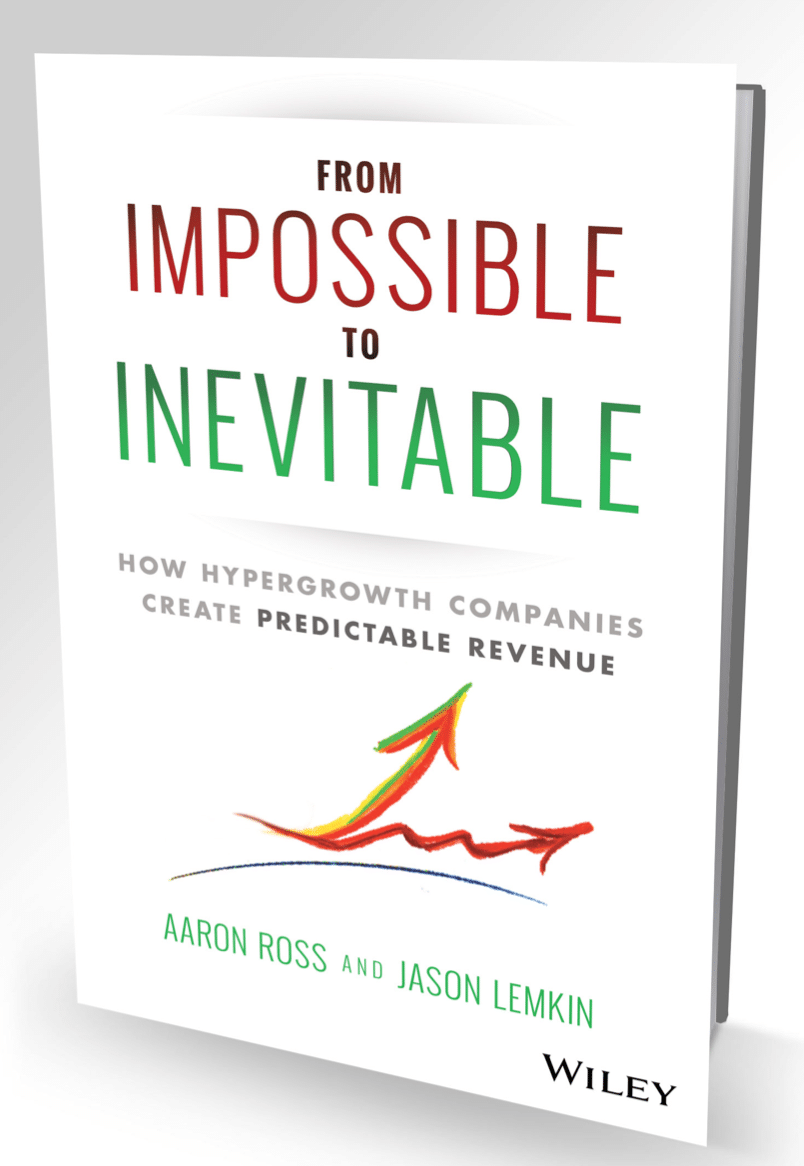5 aspects of your fundamental sales niche
Excerpt from From Impossible To Inevitable: How Hyper-Growth Companies Create Predictable Revenue.
Coming February 8, 2016.
where can you be a big fish in a small pond?
it’s better to pick a focused market that’s “too small”, but where you can find and win deals, than it is to stick to defining your target market so broadly that you get lost in it. why is this?
- it’s easier to make the pond smaller than to make the fish bigger: it’s easier to retarget, refocus and reframe yourself than to change your products and offerings.
- to grow past word-of-mouth marketing, you have to stand out.
- it’s easier to stand out and win deals in a smaller pond. when you share too many things that you excel at (too many ponds), it’s more likely to confuse prospects, rather than impress them. let’s look at what helps determine whether a niche is ripe for you:
5 aspects of your fundamental niche
1.) Popular Pain: So what if you do custom application development, analytics, mobile-enablement or sales training? Those aren’t pains; they are solutions. What main pain do you solve? Missed product launch deadlines, inaccurate forecasts, high customer attrition, lead generation struggles, low conversion rates from demo to proposal? Those are pains. And the pain has to be common enough: You want to specialize in a specific pain you solve, but not get so narrow that you can’t find anyone that has it. Within the niche you’re targeting, what pain can you solve that’s common enough to allow you a fair shot of finding customers? You know that a pain is common when you see that people are willing to pay money to solve it, repeatedly.
 2.) Tangible Results: Where can you show concrete or detailed results? How can you answer the question “What do I get?” Example: “Peace of mind or a better night’s sleep” How do you make that tangible? “Grow leads 217%” or “Shorten month-end closing to 12 hours” are much more concrete. If you struggle with hard numbers, you can use visual examples or detailed customer stories and testimonials.
2.) Tangible Results: Where can you show concrete or detailed results? How can you answer the question “What do I get?” Example: “Peace of mind or a better night’s sleep” How do you make that tangible? “Grow leads 217%” or “Shorten month-end closing to 12 hours” are much more concrete. If you struggle with hard numbers, you can use visual examples or detailed customer stories and testimonials.
3.) Believable Solution: It’s easy to make claims of “more revenue, lower costs, blah blah.” Buyers hear this every day. Why should they believe you and your claims? There’s two sides to this: (a) They have to believe you can deliver, and (b) they have to believe it’ll work for them, including their own ability and capacity to do it. Detailed case studies of similar companies are powerful – they make your solution highly credible. Honesty, expertise, confidence, simplicity, authenticity – from both the person and business they work for – all help.
4.) Identifiable Targets: If you can’t build a list of prospects or channel partners or marketing options to get access to them, you can’t very well go after them! How would you build a list of “technology CEOs suffering from severe depressive episodes at least once per quarter” or “companies that need to change the software they’re running their website on”?
5.) Unique Genius: To find or be found, to close deals, to avoid commoditization – you must be different or unique. Every business (and individual) has unique strengths, weakness and superpowers – whether or not they realize it. A talent for making money, focusing, creative writing, art, service, engineering, relationships, innovation, a passionate community, celebrity employees, an interesting personal story or history…
Sometimes it’s clear, like the customer service and culture of Zappos. Sometimes it’s hard to put your finger on, or it needs developing. But it’s always there. What makes you stand out? What are your special advantages? If you can come up with nothing else, you have the personal stories of the founders and employees. Personal stories – like “I struggled, I wanted to help others avoid the same struggle so I did x, y, z” – can themselves be very compelling.